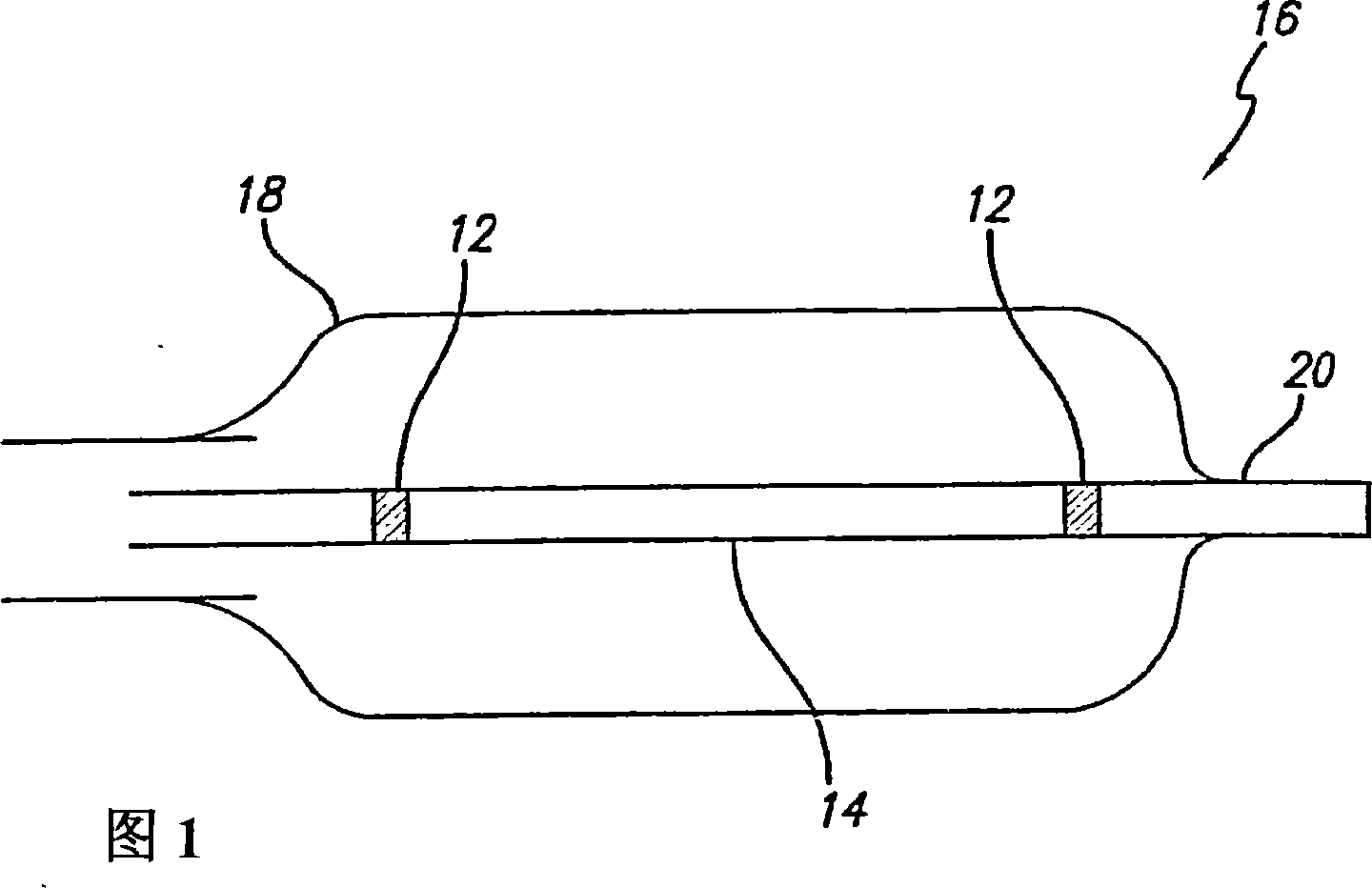Polymeric marker with high radiopacity for use in medical devices
A medical device, polymer technology, used in the field of tubes, intraluminal devices, wires or similar devices, can solve the problem of degrading the properties of polymer matrix, and achieve the effect of easy measurement of damage
- Summary
- Abstract
- Description
- Claims
- Application Information
AI Technical Summary
Problems solved by technology
Method used
Image
Examples
Embodiment Construction
DETAILED DESCRIPTION OF THE PREFERRED EMBODIMENT
[0023]The present invention provides radiopaque polymeric markers for use on a variety of devices that are bendable, highly radiopaque, and which can be readily attached to such devices by melt bonding. These properties allow the marking to have a minimum degree of thickness and thus minimize the impact of the marking on the overall profile and stiffness of the device to which it will be incorporated. In addition, higher weight percentages further increase the radiopacity of the marker and allow for a reduction in the cross-sectional size of the marker.
[0024] To achieve the high fill rates necessary to achieve the desired radiopacity, and to achieve this without sacrificing either the mixability and processability of the polymer material or its ultimate strength and flexibility, many different The parameters have been found to be important. More specifically, the particle shape and size of the radiopaque agent must be care...
PUM
| Property | Measurement | Unit |
|---|---|---|
| diameter | aaaaa | aaaaa |
| diameter | aaaaa | aaaaa |
| hardness | aaaaa | aaaaa |
Abstract
Description
Claims
Application Information
 Login to View More
Login to View More - R&D
- Intellectual Property
- Life Sciences
- Materials
- Tech Scout
- Unparalleled Data Quality
- Higher Quality Content
- 60% Fewer Hallucinations
Browse by: Latest US Patents, China's latest patents, Technical Efficacy Thesaurus, Application Domain, Technology Topic, Popular Technical Reports.
© 2025 PatSnap. All rights reserved.Legal|Privacy policy|Modern Slavery Act Transparency Statement|Sitemap|About US| Contact US: help@patsnap.com



